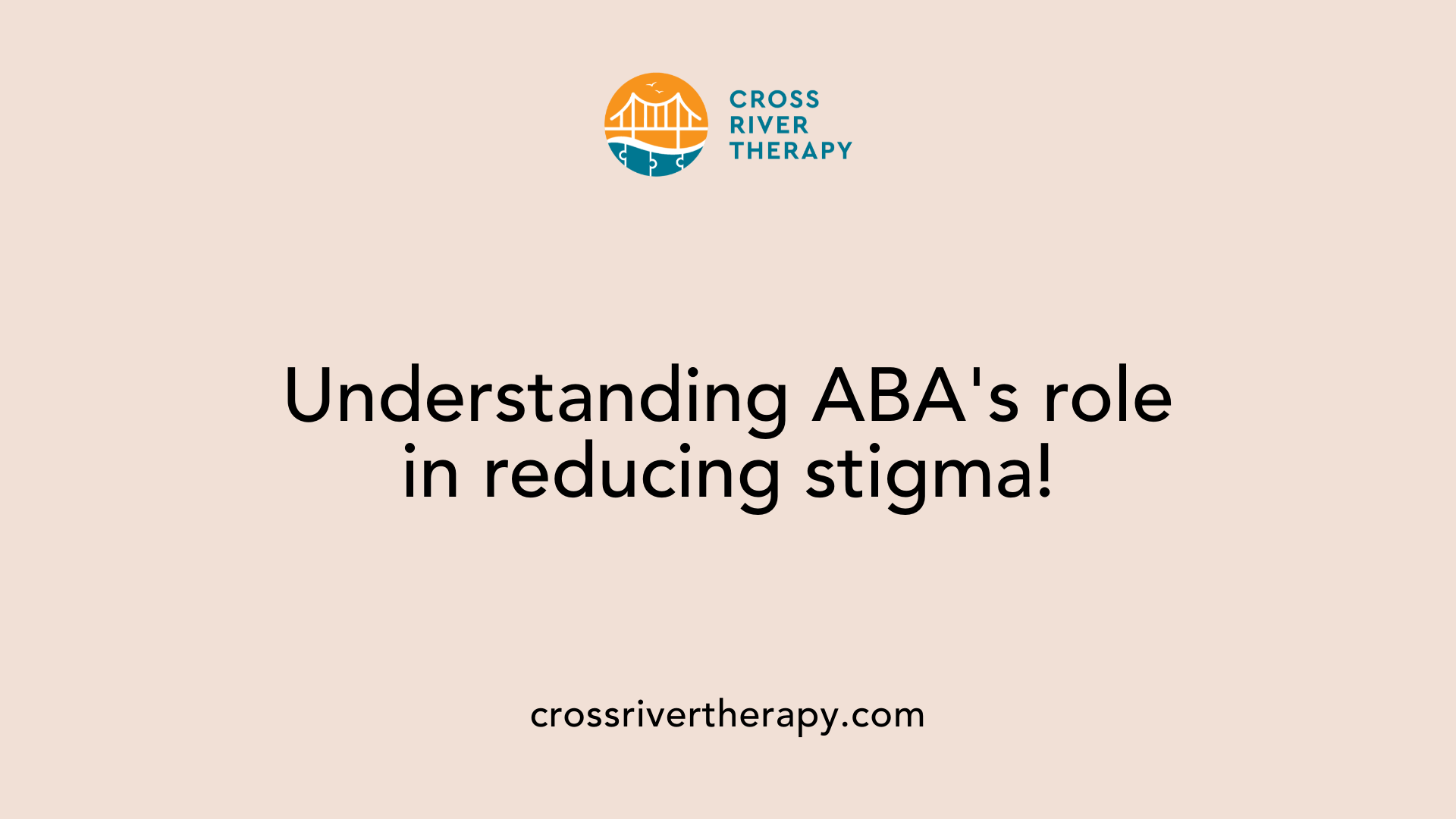How School-Based ABA Therapy Promotes Inclusion
Embracing Diversity: The Role of ABA in Inclusive Education
Introduction
Applied Behavior Analysis (ABA) therapy serves as a pivotal strategy in the integration and support of students with autism and related developmental disabilities in mainstream education settings. By promoting individualized learning, reducing behavioral challenges, and enhancing social skills, ABA therapy not only fosters inclusive classrooms but also benefits all learners. This article delves into the multifaceted role of ABA in promoting inclusive education, exploring its methodologies, principles, and the profound impact it has on student development and classroom culture.
Understanding ABA's Influence on Inclusivity

What role does ABA play in promoting inclusive education?
ABA plays a crucial role in promoting inclusive education by developing individualized learning plans (ILPs) tailored to meet each child's unique needs and strengths. These plans utilize evidence-based techniques that enhance attention and engagement, leading to structured and effective learning experiences for students with Autism Spectrum Disorder (ASD) and other developmental challenges.
The implementation of ABA supports academic and social skill development across various subjects. Techniques such as positive reinforcement and modeling encourage desirable behaviors, helping students achieve their educational goals. Additionally, ABA promotes independence and life skills, which are essential for full participation in mainstream education.
Supporting academic and social skills through ABA
Through individualized behavior intervention plans derived from Functional Behavior Assessments (FBAs), educators can specifically target challenging behaviors. This tailored approach not only improves academic performance but also fosters essential social skills, empowering students to interact positively with their peers. These social competencies are crucial for promoting inclusion, as they help students with ASD relate to and engage within their classroom communities.
Collaboration among educators and ABA specialists
A collaborative team approach is fundamental in ABA therapy within school settings. Frequent collaboration among educators, behavior analysts, therapists, and parents ensures the alignment of intervention goals and strategies. Training programs are provided to equip school staff with the necessary ABA skills, enhancing their capacity to support students effectively. This collective effort aims to foster a supportive learning environment where all students can thrive together, thereby enhancing the overall inclusivity of educational settings.
| Topic | Details | Reference |
|---|---|---|
| Role of ABA | Integrates evidence-based strategies for tailored learning | Multiple studies indicate positive outcomes |
| Academic Support | Individualized plans improve academic skills | Evidence of enhanced student performance |
| Collaboration | Team involvement is critical for intervention success | Staff training strengthens supportive practices |
Core Principles and Methods of School-Based ABA

What are the principles and methodologies of ABA therapy within schools?
ABA therapy in schools operates on foundational principles derived from the science of learning and behavior. Its primary objective is to promote positive behaviors while addressing and reducing harmful ones. This approach utilizes the A-B-C model, which stands for Antecedent, Behavior, and Consequence, to identify triggers for behaviors and their outcomes.
In this model:
- Antecedents refer to events or conditions that lead to a behavior.
- Behavior describes the action taken by the student.
- Consequences are the responses that follow the behavior, which can either reinforce or diminish that behavior in the future.
How does positive reinforcement and behavior management work in ABA?
The emphasis on positive reinforcement is a hallmark of ABA therapy. By acknowledging and rewarding desired behaviors, educators can effectively encourage students to repeat those behaviors. This method is preferred over punitive measures, leading to an atmosphere where students feel more secure and motivated to learn.
- Positive behavior support (PBS) techniques, a subset of ABA, ensure that desirable behaviors are continually reinforced, fostering a calmer and more accepting classroom environment.
- Strategies include individualized Learning Plans (ILPs) and tailored interventions designed to boost communication, social skills, and academic progress for each child.
How is the integration of ABA principles applied in education?
Integrating ABA principles into everyday school activities allows for a seamless transition from therapy to real-world application. This means that ABA techniques can be utilized throughout the school day, promoting consistent skill development.
- School staff, through training programs in ABA practices, are better equipped to create inclusive environments.
- This collaborative effort among educators, behavior analysts, therapists, and parents is crucial to ensure that the goals and interventions align, promoting inclusion for children with diverse needs.
Through this comprehensive approach, ABA therapy fosters a supportive classroom atmosphere, directly contributing to the overall academic success and social inclusion of students with Autism Spectrum Disorder.
Goals and Advantages of School-Based ABA for Students

What are the goals and benefits of school-based ABA therapy for students with autism and related developmental disabilities?
School-based ABA therapy offers various benefits tailored to children with autism and related developmental disabilities. The primary goals include:
- Improving Behaviors: Targeting and reducing challenging behaviors through effective interventions.
- Enhancing Academic Skills: Supporting students to reach their full academic potential with tailored educational strategies.
- Fostering Social Skills: Promoting social competence and peer interactions through integrated social skills instruction.
- Promoting Independence: Encouraging the development of life skills that allow students to participate fully in mainstream education.
What role do Functional Behavior Assessments (FBAs) play in ABA?
FBAs are a crucial component of school-based ABA therapy. They help to:
- Identify specific challenging behaviors that students may exhibit.
- Determine the underlying causes of these behaviors.
- Develop targeted and effective behavior intervention plans (BIPs) that cater specifically to the child’s needs.
This data-driven approach ensures that interventions are appropriately tailored, fostering impactful improvements in students' behaviors and learning experiences.
How do training programs support teachers and parents?
Training programs are essential for both educators and parents, providing:
- Education on ABA principles and strategies to support the child's learning at home and school.
- Opportunities to collaborate with therapists, enhancing a unified approach to behavioral interventions.
- Resources to effectively implement techniques that bolster student progress and promote inclusive practices.
These programs empower families and educators alike, fostering a supportive and informed environment conducive to the child’s development and success.
Overall, exhibiting a collaborative effort, functional assessments, and robust training initiatives propositions school-based ABA therapy as an effective method for helping students thrive in inclusive educational settings.
Supporting Students with Disabilities in Mainstream Schools
How do ABA techniques support children with disabilities in mainstream educational settings?
ABA techniques provide students with disabilities in mainstream settings with structured environments that facilitate not only learning but also social interactions. By utilizing methods rooted in an understanding of behavior, educators can apply strategies such as positive reinforcement to promote desirable behaviors while minimizing disruptive or harmful actions.
Individualized Learning Plans (ILPs) created through ABA encompass each child’s distinct strengths and challenges. These plans are crafted by certified professionals, ensuring that interventions are tailored to meet the specific needs of each student. Data-driven decision-making within ABA allows educators to monitor progress and make necessary adjustments, enhancing overall support in inclusive classrooms.
Key Components of ABA in Daily Routines
Structured Environments:
- ABA fosters environments that support routine, making transitions smoother for students with disabilities.
- Classrooms are designed to be predictable, allowing students to focus better on their tasks.
Positive Reinforcement Techniques:
- Reinforcement strategies are utilized to encourage desirable behaviors. For example:
- Acknowledging good work with praise.
- Offering tokens or rewards for completing assignments.
- Through these methods, educators cultivate a motivating atmosphere that nurtures learning.
- Reinforcement strategies are utilized to encourage desirable behaviors. For example:
Integration into Daily Activities:
- ABA strategies are melded into everyday school activities. This integration helps students to practice skills in authentic social interactions.
- For instance, social skills training can be embedded in group activities or recess, enhancing peer relationships.
Additional Insights
Research demonstrates that students receiving school-based ABA therapy show notable improvements in various areas, including academic performance, behavior management, and social skills. The focus on collaborative approaches among educators, therapists, and parents creates a unified support system, further bolstering the effectiveness of these interventions in fostering inclusion.
Strategizing ABA Implementation in Inclusive Classrooms
What strategies can be used for successful implementation of ABA therapy in inclusive classrooms?
Successful implementation of ABA therapy in inclusive classrooms requires a multifaceted approach, centered around collaboration, regular assessments, and family involvement.
Collaboration between educators and ABA professionals is crucial. Educators must work closely with behavior analysts to ensure that interventions are personalized based on thorough understanding of each student's unique challenges and strengths. This partnership paves the way for tailored educational strategies and effective implementation of techniques that promote inclusion.
Regular assessments play a pivotal role in the process. Conducting Functional Behavior Assessments (FBAs) allows educators and therapists to identify challenging behaviors and design responsive interventions. Using this data to inform Individualized Learning Plans (ILPs) ensures that strategies remain relevant and effective as students progress.
Family involvement enhances the impact of ABA strategies. Training sessions for parents enable them to support their child’s skills at home, thereby reinforcing learned behaviors and promoting skill generalization. Ongoing communication between families and school staff is essential to ensure a consistent approach to interventions across both environments.
In summary, fostering collaboration among educators, therapists, and families, along with regular assessments and training, are key strategies that contribute to the successful implementation of ABA therapy in inclusive educational settings.
Impact of ABA on Social-Emotional and Academic Growth
How does ABA therapy impact social-emotional development and academic success?
ABA therapy has a profound effect on both social-emotional development and academic success for children with autism. By providing individualized support, it enhances their learning capabilities and social interactions in classroom settings.
One of the first steps in ABA is conducting Functional Behavior Assessments (FBAs). These assessments help identify specific behavioral challenges each child faces. Following identification, therapists implement tailored interventions which allow students to engage in learning more effectively.
This structured approach fosters a more inclusive environment, encouraging meaningful interactions with peers and teachers. A supportive classroom atmosphere helps children develop the essential communication skills necessary for social competence.
Research suggests that students who receive early and intensive ABA services show significant long-term improvements. Many demonstrate progress not only in communication but also in daily living skills. By using principles of positive reinforcement, ABA enables skill acquisition and fosters independent thinking over time.
Moreover, the collaborative nature of ABA integrates efforts among therapists, educators, and parents, ensuring a unified strategy that promotes academic achievement and personal growth. This teamwork contributes to an environment where differences in learning needs are openly acknowledged, thus reducing stigma and promoting acceptance.
Overall, the impact of ABA therapy on social-emotional development and academic success is evident, providing children with the vital tools necessary for their ongoing growth in various life areas.
Combating Stigma Through ABA in Education

How can ABA therapy help in addressing stigma and enhancing social interactions in educational settings?
ABA therapy plays a significant role in combating stigma within education by fostering understanding and acceptance of individuals with Autism Spectrum Disorder (ASD). As students witness the progress of their peers receiving ABA interventions, they begin to appreciate their capabilities rather than merely focusing on their challenges.
Benefits of ABA Interventions in Reducing Stigma:
- Enhanced social skills: ABA therapy emphasizes teaching vital social interactions, helping students with ASD connect better with their peers.
- Positive behavior reinforcement: Therapists use structured methods to cultivate socially acceptable behaviors, which aids in dispelling negative stereotypes about autism.
- Increased awareness among peers: Educating classmates about ASD promotes empathy and understanding, leading to a more inclusive atmosphere.
Peer education and acceptance
Promoting awareness among students is essential for building a supportive community. As educators incorporate discussions about autism into the curriculum, they can foster acceptance and mitigate stigma.
Promoting socially accepted behaviors
Through individualized interventions designed in collaboration with educators, ABA therapy targets socially accepted behaviors. This not only aids in skill acquisition but also reinforces positive social interactions, contributing to a harmonious classroom environment.
Cultivating inclusive learning environments
Creating inclusive classrooms where differences are embraced paves the way for meaningful interactions. ABA therapy equips educators and students alike with the tools needed to support one another, ensuring that everyone feels valued and understood. This collaborative culture ultimately leads to enhanced educational experiences and fosters a sense of belonging for all students.
The Future of Inclusive Education with ABA

What is the future outlook on the integration of ABA in school settings for enhanced inclusivity?
The outlook for integrating ABA in school settings is highly positive. Ongoing research is continually refining strategies to improve outcomes for students, especially those with Autism Spectrum Disorder (ASD). With the increasing number of educators trained in ABA principles, more classrooms are expected to adopt inclusion strategies that benefit diverse learners.
Collaboration among educators, behavior analysts, therapists, and parents is becoming essential in this evolving landscape. This collaborative approach helps align goals and strategies, fostering a more inclusive environment where each child’s unique needs are addressed.
Enhancing peer support and understanding
Initiatives aimed at promoting peer awareness and acceptance are crucial. Schools are integrating discussions about autism and employing peer-mediated interventions to build supportive communities. As students witness positive changes in their classmates receiving ABA therapy, empathy and understanding grow, further reducing stigma associated with disabilities.
Building inclusive communities
The future of inclusive education is also about fostering environments that celebrate diversity. Evidence-based practices tailored to individual needs ensure that all students can thrive academically and socially. With a focus on positive reinforcement and behavior modification strategies, ABA helps cultivate a classroom atmosphere where differences are embraced.
As advocacy for awareness continues, the integration of ABA principles is set to transform educational settings, making them more inclusive for all students. Through this, we expect to see strengthened community ties and enriched learning experiences for everyone involved in the educational journey.
Conclusion
ABA therapy remains an integral component of inclusive education, bridging the gap for students with autism and creating a supportive and understanding classroom environment. Through its structured and evidence-based approaches, ABA facilitates social inclusion, academic achievement, and personal development, enabling students to reach their full potential. The collaborative efforts among educators, therapists, and families are essential to the success of ABA in schools, ensuring sustainable and effective support for all learners. As educational frameworks continue to embrace ABA principles, the promise of inclusive education becomes more attainable, fostering a world where diversity in learning is valued and supported.
References
- Unit 9: ABA in Inclusive Education: Revolutionizing Learning for All
- Integrating ABA Therapy in Schools: Strategies for Success
- ABA Therapy in Schools: School-Based ABA Services
- Impact of School-Based ABA Therapy on Student Development
- School-Based ABA Therapy and Social Media in Fighting Stigma
- Applied Behavior Analysis (ABA) | Autism Speaks
- Applied Behavioral Analysis (ABA) - Autism Speaks



